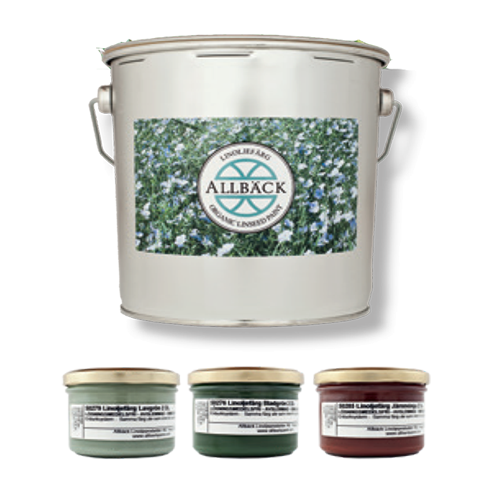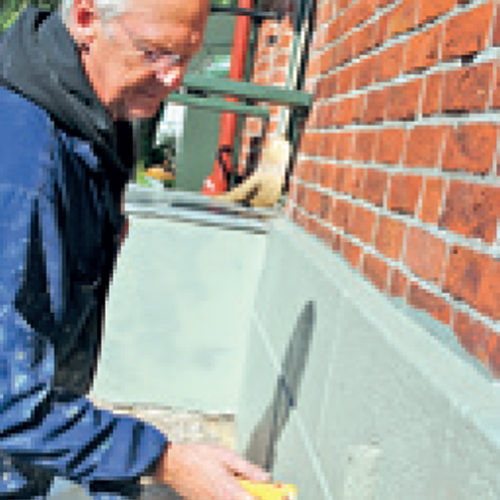For wood, steel, iron and plastic – for exterior and interior use GREEN SIGNAL in the Swedish Environmental Building Material Assessment and an A in Sunda Hus
Important questions to ask
What are you going to paint and why? Is the paint to act as protection and a wear layer or as decoration? Outdoors or in? Once you have defined what you need, you can choose your materials. Today there are no standardized definitions of linseed oil and linseed oil paint, there is a huge amount of confusion.
These instructions are according to our experience since 1982.
The surface
Sawn rough timber needs more paint, takes longer to paint and attracts more dirt than planed timber. The elasticity and friction in the paint means it absorbs more dirt in the initial period after application.
Gradually, as the surface becomes matte, grains of pigment slowly fall out and the surface becomes externally self-cleaning.
No pesticides When you get dirt and mould on painted surfaces, wash them with Linseed Soap. When painting surfaces that are exposed to various kinds of mould, pure zinc paint can be added to all our paints, to a maximum of 20%. This zinc paint is marked with the “Dangerous for the environment” symbol depicting a dead tree and a dead fish. Take care with it.




Leave a comment
This site is protected by hCaptcha and the hCaptcha Privacy Policy and Terms of Service apply.